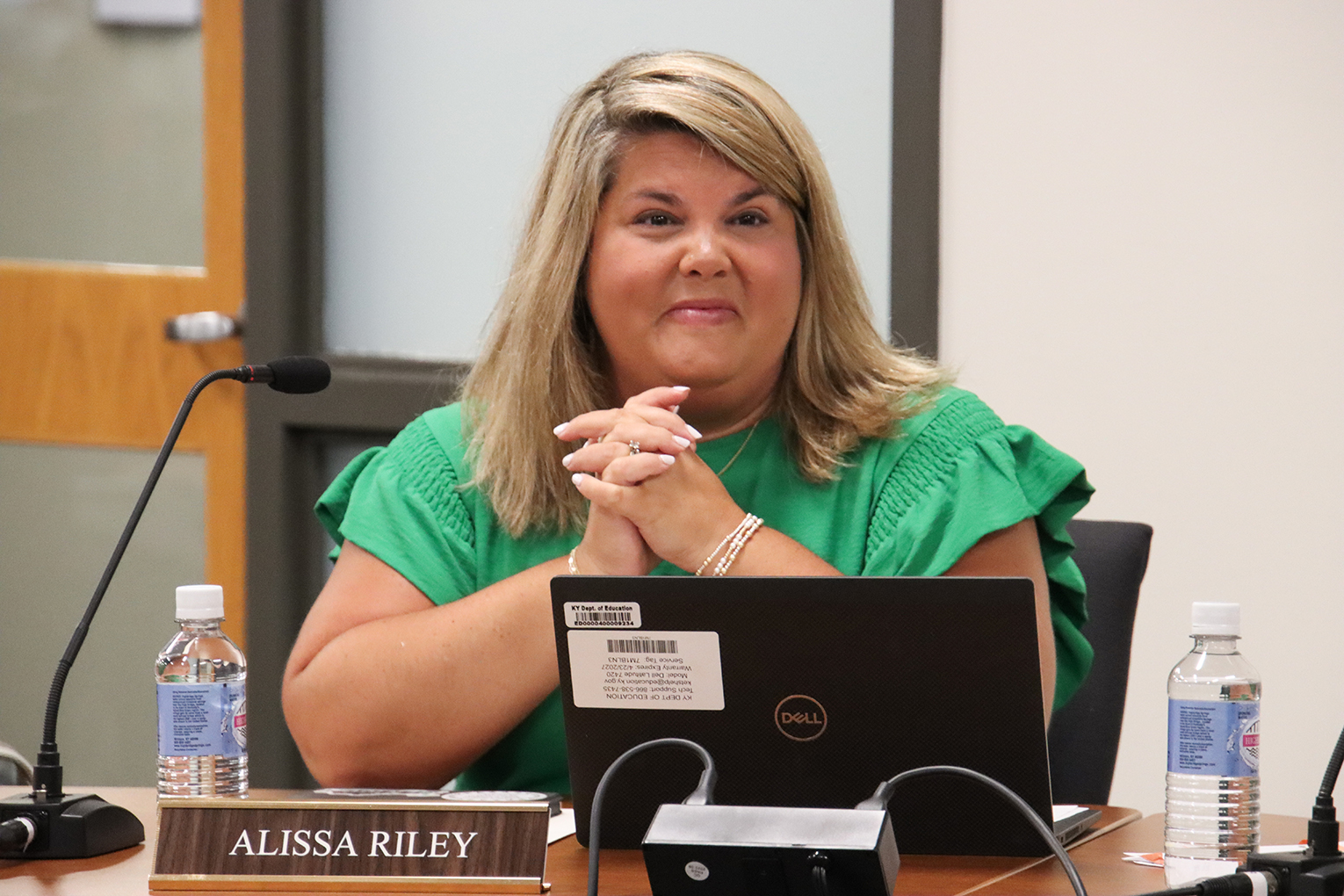By Brad Clark
brad.clark@woodford.kyschools.us
There are more than 42,000 teachers in the commonwealth. If 25 percent of Kentucky teachers were connected, engaged in the meaningful work of transforming education for the students and teachers within their sphere of influence, there would be more than 10,000 teachers engaged in the Teacher Leadership Movement in Kentucky. At the very least, 15 percent of Kentucky teachers should be connected. The fact is, not even 6,000 Kentucky teachers are connected to this transformative work yet.
Connected educators work on the work of teaching together. They lead ed-based chats on Twitter. They write about their classrooms. They impact policy. They represent every type of teacher from every corner of Kentucky. I know a lot of connected educators, but when compared to the total number of teachers in Kentucky, they are a small number. We have not been able to scale teacher connectedness across Kentucky – yet.
Lauren Hill, who is splitting her time between the classroom and the Kentucky Education Professional Standards Board’s work to expand National Board Certified Teachers in Kentucky, stated in a recent blog entry that despite reservations about social media, “our connections to each other keep us connected to ourselves, reminding us of what we value and what we don’t.”
In October 2013, Kentucky educators participated in Connected Educator Month. We intentionally examined how we connect to one another. As the month closed, I wrote a blog for Education Week that explored why we connect. In that blog, I wondered how we rid our profession of the culture of isolation, which stymies the collective strength of Teacher Voice.
Reading it now, I can see my personal growth over the past year. I can see the benefits of being more connected to my fellow teachers.
For me, being a connected educator creates the conditions necessary for my professional growth. I am willing to use social media and technology to refine my in-class practice of teaching students and, of equal importance, my out-of-class practice of supporting teacher leadership efforts.
When we connect, we impact our practice, find value
Around the nation, educators are re-evaluating the dynamics of teacher evaluation. Kentucky teachers are grappling with the realities of successfully implementing the Professional Growth and Effectiveness System (PGES). In some districts, where the culture of PGES implementation is one of compliance, documentation is yet another item to add to the checklist of tasks that deplete teacher time.
In other districts, where PGES is being used as a tool to improve teachers’ practice, educators are forming Professional Learning Communities that extend well beyond the traditional grade level team. Many teachers are collaborating with colleagues across the state to enhance effective pedagogical practice, thereby creating new, unprecedented means and models for advocating for exemplary student learning experiences and further professionalizing the teaching profession.
Connecting is the ‘how,’ relationships are the ‘why’
When we discuss connected educators, we typically are referring to their presence on social media and how they use technology. We should not be celebrating the tools of connection; rather, we should celebrate how the tools forge deep relationships among educators across large distances.
Being a connected educator is not being on Twitter or using Google Apps for Education. Being a connected educator is being connected to fellow teachers, finding kindred spirits to join your tribe and collaborating with fellow educators and stakeholders to rethink and refine the nature of teaching and learning.
I have used social media to join multiple tribes and in doing so, I have been afforded the great opportunity both to support the work of other Teacher Leaders and be supported by Teacher Leaders across the nation.
Throughout history, humans have never had this level of hyper-connectivity. We have the ability to collaborate with like-minded peers across time and distance. We also have the capability to be solutions-oriented, even when we disagree. By being connected, we can respectfully challenge one another’s thinking. Sarah Yost, a Jefferson County teacher and Hope Street Group Teacher Fellow, recently stated, “We grow through that friction and learn from different perspectives.”
Sadly, we have yet to systematically apply connectivity to the teaching profession. We have the means to remove isolation from the teaching experience. What is stopping us, as a collection of classroom practitioners, from doing so?
Last October, I closed my blog with the hope that November and December would reveal why we connect. Here is to hoping that the remainder of the 2014-15 school year reveals what happens when educators connect.
Brad Clark is an English/language arts and social studies elementary teacher at Simmons Elementary School (Woodford County). He is also a Hope Street Group State Teacher Fellow and a blogger for the Center for Teaching Quality.




When I set aside my fear of sounding dumb and became willing to join into conversations, I began to actually explore ideas and enjoy the exploratory nature of learning with other teachers. It was fun! A bit of trust and safety in the group helps too. I feel you sparking a fire here!